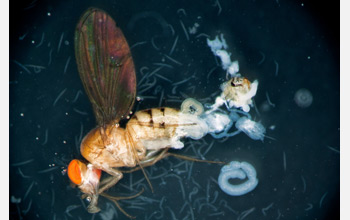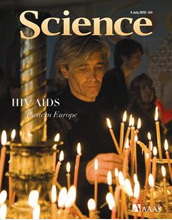All Images
News Release 10-114
New Way to Conquer Disease-Causing Nematodes in Flies has Implications for Human Diseases
Flies developed protection through alternative form of evolution
This material is available primarily for archival purposes. Telephone numbers or other contact information may be out of date; please see current contact information at media contacts.

A dissected Drosophila fly, parasitized by a nematode, is shown. Nematodes invade female flies when they are young by burrowing through their skin and prevent them from producing eggs once they mature. However, when a female fly is also infected with a bacteria species called Spiroplasma, the nematodes grow poorly and no longer sterilize the flies.
Credit: J. Adam Fenster/University of Rochester
Download the high-resolution JPG version of the image. (3.2 MB)
Use your mouse to right-click (Mac users may need to Ctrl-click) the link above and choose the option that will save the file or target to your computer.
Dr. Jaenke describes nematodes and the threats posed by them.
Credit: University of Rochester/National Science Foundation
Study results: Dr. Jaenke explains how flies protect themselves from disease-causing nematodes.
Credit: University of Rochester/National Science Foundation
Dr. Jaenke explains the implications of his study for fighting human diseases.
Credit: University of Rochester/National Science Foundation

This research is detailed in the July 9, 2010 issue of Science.
Credit: Copyright AAAS 2010
Download the high-resolution JPG version of the image. (22 KB)
Use your mouse to right-click (Mac users may need to Ctrl-click) the link above and choose the option that will save the file or target to your computer.


